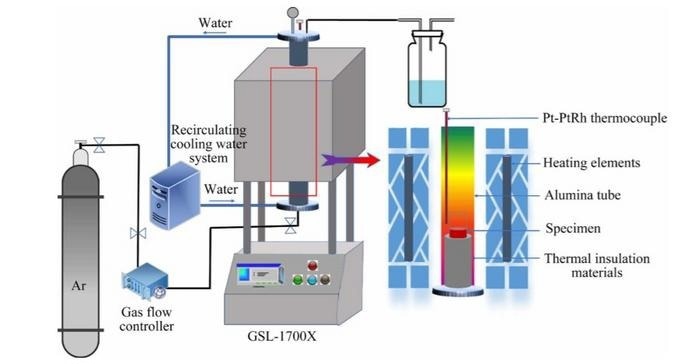Copper smelting – a critical process in metal production – often generates slag, which contains valuable metals. This slag has historically been thrown away, causing harm to the environment and depleting crucial resources.

A recent study, however, seeks to address these issues by introducing a method for recovering copper, lead, and zinc from copper smelting slag.
Slag production from copper smelting is a key source of copper production. China produced more than 11,000 kilotons of refined copper in 2022; Thus, 2.2 to 3 tons of slag were created for every ton of copper produced.
Important metals like copper (0.5%–6%), lead (0.2%–0.6%), and zinc (1%–5.5%) are present in this slag. These metals are frequently not collected, posing a risk to the environment due to leaking harmful ions and resource waste.
A study published in Transactions of the Nonferrous Metals Society of China describes a unique sulfurization-reduction technique for recovering copper, lead, and zinc from copper smelting slag. With possible effects on business practices and environmental sustainability, this discovery marks a major advancement in the management of metallurgical waste.
In particular, the research from Central South University for the recovery of copper, lead, and zinc from copper smelting slag represents a major advancement in metal recycling technology.
This new sulfurization-reduction method makes effective use of pyrite as a sulfurizing agent to help extract these metals. The team’s meticulous methodology, which blends thermodynamic analysis with useful laboratory trials, has produced remarkable recovery rates of over 90 % for lead and nearly 98 % for copper and zinc.
This process is not only efficient at recovering precious metals from materials that were previously thought to be waste, but it also significantly contributes to environmental preservation. This process helps the metallurgical sector adopt a more sustainable approach to waste management by drastically lowering the hazardous residues in the residual slag.
It emphasizes the significance of both economic viability and environmental responsibility in resource recovery operations, suggesting a move towards more environmentally friendly approaches.
This sulfurization-reduction method not only recovers valuable metals efficiently but also significantly reduces the environmental footprint of copper smelting.
Qing-hua Tian, Lead Researcher, School of Metallurgy and Environment, Central South University
This study creates new opportunities for the recovery of important metals and the mitigation of environmental damage in the future of metal recovery. It brings important ramifications for the metallurgical sector, particularly in nations that produce a lot of copper, as it brings industrial processes into line with the expanding need for environmental sustainability.
Journal Reference:
Tian, Q., et al. (2023) Synergistic recovery of copper, lead and zinc via sulfurization–reduction method from copper smelting slag. Transactions of Nonferrous Metals Society of China. doi.org/10.1016/S1003-6326(23)66375-7
Source: https://en.csu.edu.cn/




